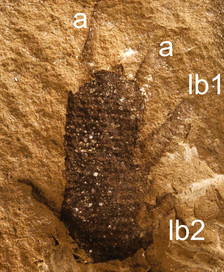Organic coatings and onychophorans
Two ICAL teams have published new research at the start of August 2016 - giving us glimpses into the history of humans, and life on land 305 million years ago.

ICAL members, Drs Michael Buckley, Holly Barden, and Bart van Dongen, along with an international team, have analysed rare basket and skull fragments from the Nahal Hemar cave (Israel, ca. 8200 −7300 cal. BC). The team used a range of analytical techniques to study these a samples, and showed that the basket samples yielded not only collagen and blood proteins of cattle origin, but also a large amount of protein from the sea squill plant, a.k.a. the ‘sea onion’, known to be used as a traditional remedy for various illnesses. The skull was covered with a black organic coating applied in a net pattern, evoking a headdress. The authors have showed that Styrx plant resin, an aromatic material used as an ingredient of perfumes and incense, was used in this coating. This reveals the earliest evidence of the use of aromatic plant resin in a ritual context to date! More about this research is freely available here.
Meanwhile Dr Russell Garwood and colleagues have published a paper documenting velvet worms in 305 million-year-old rocks. These animals are soft-bodied and have a very limited fossil record, so the discovery helps fill in some of the blanks in their evolutionary history. The team suggests the fossils - analysed with high resolution CT scanning - may well represent the first known members of the group to live on land. This paper is also freely available, from here.


